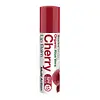What's inside
What's inside
 Key Ingredients
Key Ingredients

 Benefits
Benefits

 Concerns
Concerns

 Ingredients Side-by-side
Ingredients Side-by-side

Ricinus Communis Seed Oil
MaskingButyrospermum Parkii Butter
Skin ConditioningEuphorbia Cerifera Wax
Ethylhexyl Methoxycinnamate
UV AbsorberCera Alba
EmollientCaprylic/Capric Triglyceride
MaskingSimmondsia Chinensis Seed Oil
EmollientCopernicia Cerifera Wax
Butyl Methoxydibenzoylmethane
UV AbsorberAroma
Argania Spinosa Kernel Oil
EmollientHelianthus Annuus Seed Wax
Skin ConditioningAloe Barbadensis Leaf Extract
EmollientGlycine Soja Oil
EmollientPrunus Cerasus Fruit Extract
AntioxidantHelianthus Annuus Seed Oil
EmollientTocopheryl Acetate
AntioxidantRicinus Communis Seed Oil, Butyrospermum Parkii Butter, Euphorbia Cerifera Wax, Ethylhexyl Methoxycinnamate, Cera Alba, Caprylic/Capric Triglyceride, Simmondsia Chinensis Seed Oil, Copernicia Cerifera Wax, Butyl Methoxydibenzoylmethane, Aroma, Argania Spinosa Kernel Oil, Helianthus Annuus Seed Wax, Aloe Barbadensis Leaf Extract, Glycine Soja Oil, Prunus Cerasus Fruit Extract, Helianthus Annuus Seed Oil, Tocopheryl Acetate
 Reviews
Reviews

Ingredients Explained
These ingredients are found in both products.
Ingredients higher up in an ingredient list are typically present in a larger amount.
This oil comes from the seeds of the desert shrub called Jojoba. It is more commonly known as jojoba oil, a non-comedogenic oil.
Jojoba oil does not contain fragrance and has many fatty-acids, making it a great soothing ingredient.
It also contains Vitamin E, a great moisturizing ingredient. Vitamin E is also an antioxidant and protects your skin against oxidative damage.
This ingredient humectant properties, meaning it helps draw moisture from the air. This helps keep your skin hydrated.
While jojoba has antibacterial properties, it is only able to kill some strains of bacteria.
Studies also show it helps in wound healing. In fact, Indigenous cultures have used jojoba as a moisturizer and to help treat burns for centuries.
Fun fact: Jojoba oil similar to natural human skin sebum, so it has a great effect on dry skin. It is also promising with helping to regulate sebum production.
Due to its fatty acid content, Jojoba oil may not be fungal acne safe. We recommend speaking with a professional if you have any concerns.
Learn more about Simmondsia Chinensis Seed Oil